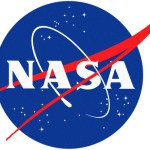- Industrie: Aerospace
- Number of terms: 16933
- Number of blossaries: 2
- Company Profile:
The Executive Branch agency of the United States government, responsible for the nation's civilian space program and aeronautics and aerospace research.
The four large satellites of Jupiter so named because Galileo discovered them when he turned his telescope toward Jupiter: Io, Europa, Ganymede, and Callisto.
Industry:Aerospace
Unit of gravity field measurement corresponding to a gravitational acceleration of 1 cm/sec2.
Industry:Aerospace
A thousandth of the metric standard unit of mass (see kg). The gram was originally based upon the weight of a cubic centimeter of water, which still approximates the current value.
Industry:Aerospace
Constant at any given place, the value of g varies from object to object (e.g. Planets), and also with the distance from the center of the object. The relationship between the two constants is: g = GM/r2 where r is the radius of separation between the masses' centers, and M is the mass of the primary body (e.g. A planet). At Earth's surface, the value of g = 9.8 meters per second per second (9.8m/s2). See also weight.
Industry:Aerospace
A multiplier, x109, from the Latin "gigas" (giant). See the entry for CGPM.
Industry:Aerospace
Its tiny value (G = 6.6726 x 10-11 Nm2/kg2) is unchanging throughout the universe.
Industry:Aerospace
The phenomenon of emitting light upon absorbing radiation of an invisible wavelength.
Industry:Aerospace
Two commonly used units of force are the Newton and the dyne. Force = Mass X Acceleration.
Industry:Aerospace
